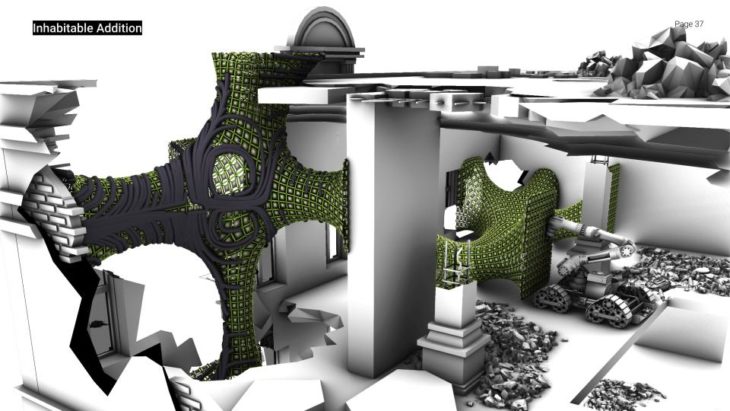
This research aims to analyze the implications of generating processes within nature and cells’ structure to mimic them inside additive structures in damaged buildings.
Takig inspiration from self-healing process of bone repair, the main goal of the study is to translate this processes into computational algorithms, generating a system that
can be implemented within any given geometry. An automated system that can, therefore, work within buildings with high-structural damage and limited, human access.
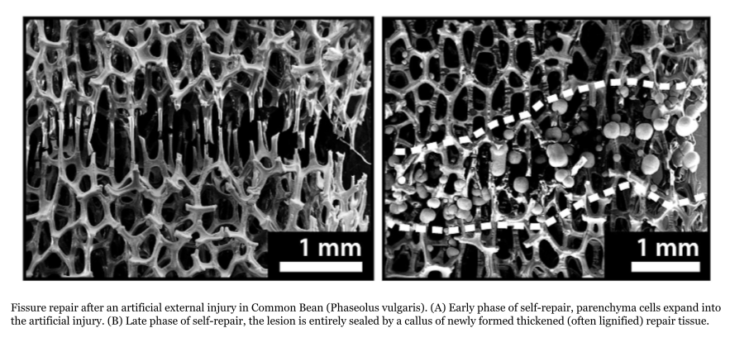
As part of a systemized workflow that would prevent human presence inside these buildings, damaged zones will be first identify by drones. These areas would be then analyzed through Augmented Reality (AR)—also remotely-operated for safety, to be later on connected through a mesh-welding automated process and 3D-printed in situ.
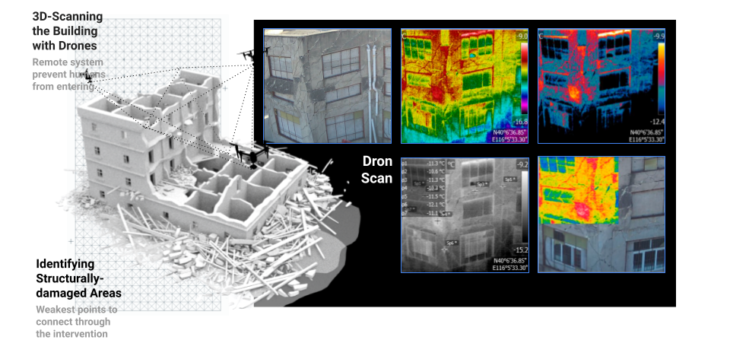
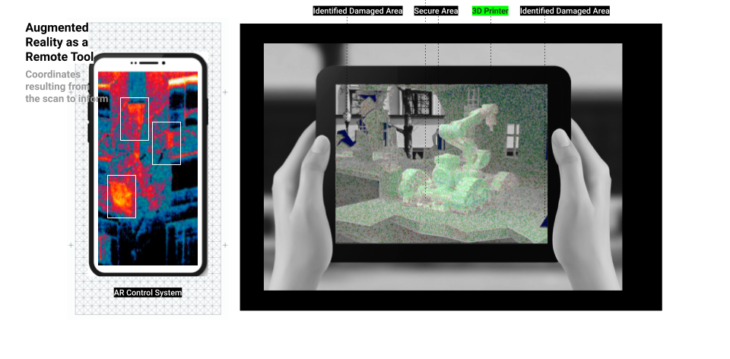
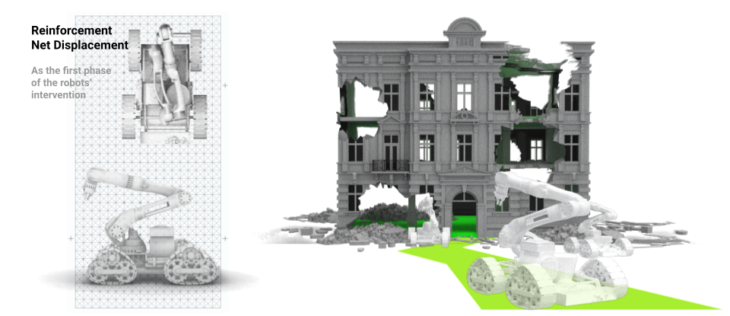
As remote assistance, points are instantiated for polyline creation to be used as paths for the system’s implementation. Using the State Theatre in Hong Kong as a case-study, a mimic of a 3D scan—introducing primitive geometries to implement form finding processes, topological, and structural optimizations—has been perfomed.
Then—and in order to implement the mentioned self-healing process in structural elements—a series of ‘fissure-repairing’ geometries are proposed:
- A first iteration that starts with the so-called self-healing structure as wall-slab reinforcement within the tested buildings’ missing columns. Here, the added geometry is consolidated through the introduction of structural supports as a result of the AR’s point cloud. Then—and throught the use of form-finding processes to better select the position of the supports—a mesh is created by following the resulting polylines.

- A second iteration in the shape of a vault that is proposed so as to serve both as shelter and as structural-consolidation element; Its primary shape—obtained, once again, through form-finding processes—constrained within the main structural frames of the damaged area. The resulting geometry is then optimized to better its performance against the different loads.
- A third additive structure that connects two damaged points to create habitable spaces within. To achieve this geometry, the form finding processes aid the structure to contain and attach collapsing sections of the building.
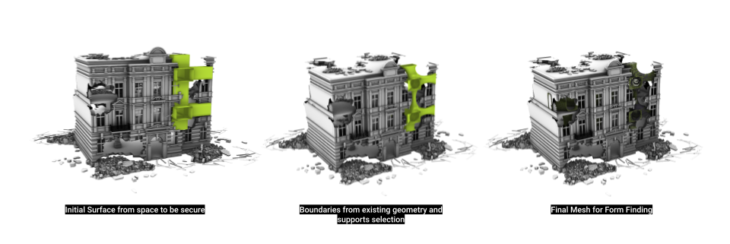
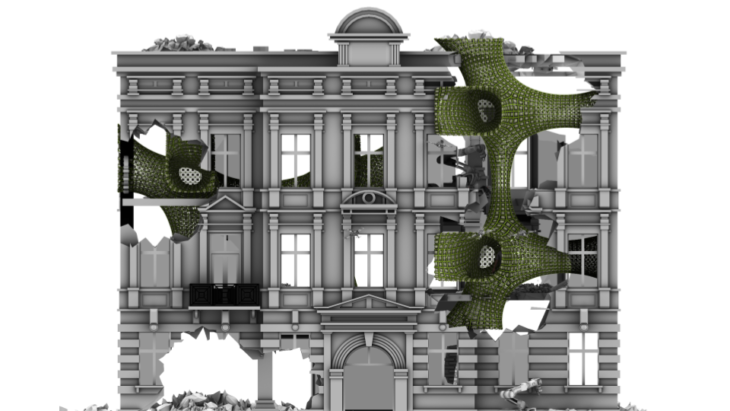
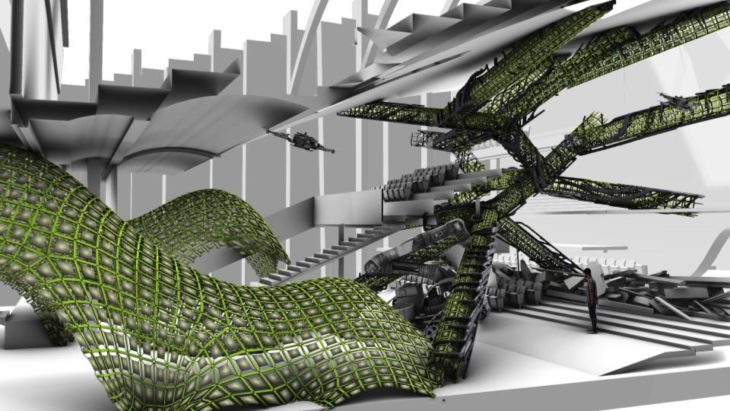
Self-Generated AR 3D-Printed Structures is a project of IAAC, Institute for Advanced Architecture of Catalonia developed in the Master in Advanced Computation for Architecture & Design in 2021/22 by:
Students: Pablo Jaramillo and Irene Martín Faculty: Rodrigo Aguirre & Hesham Shawqy